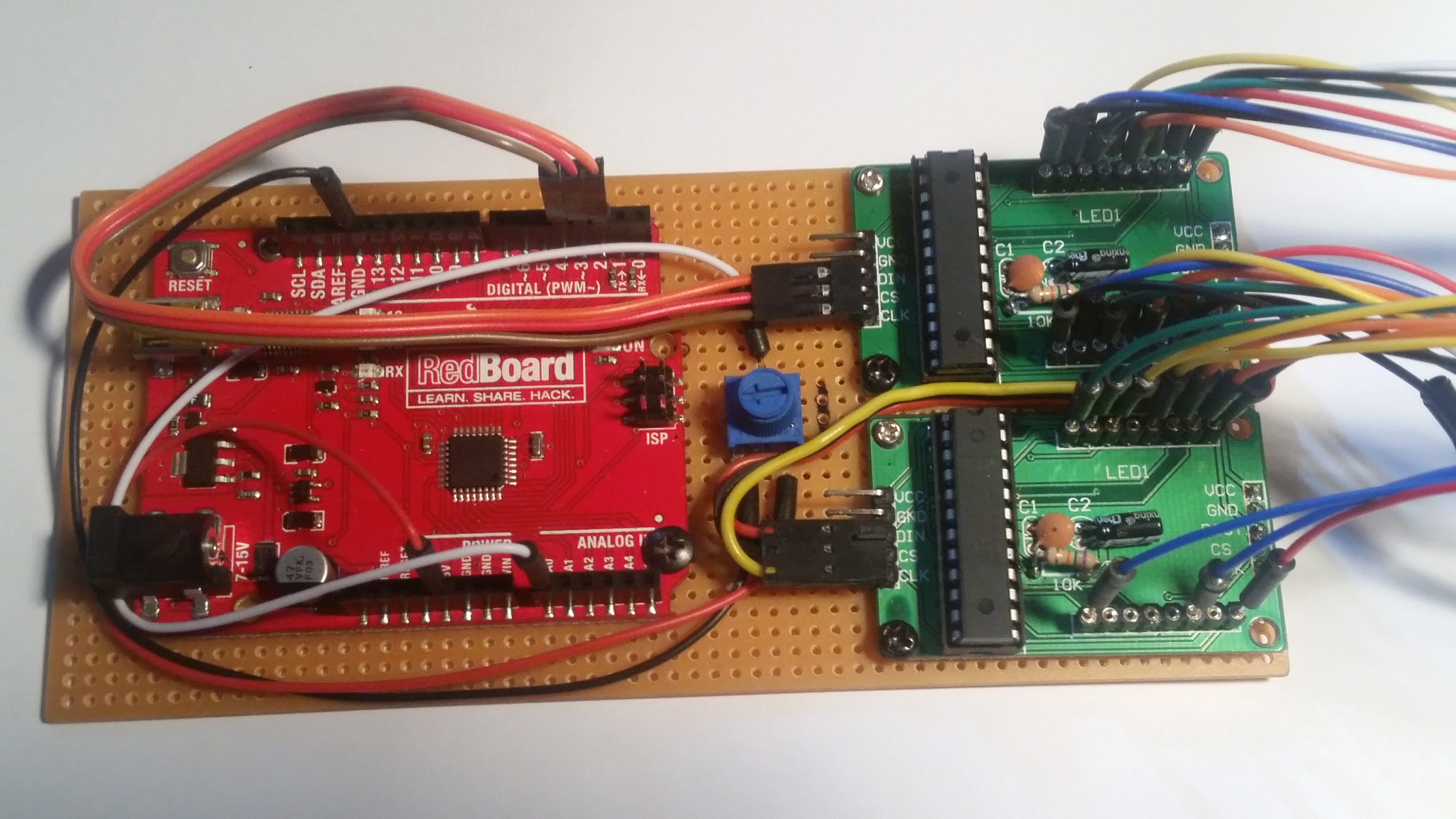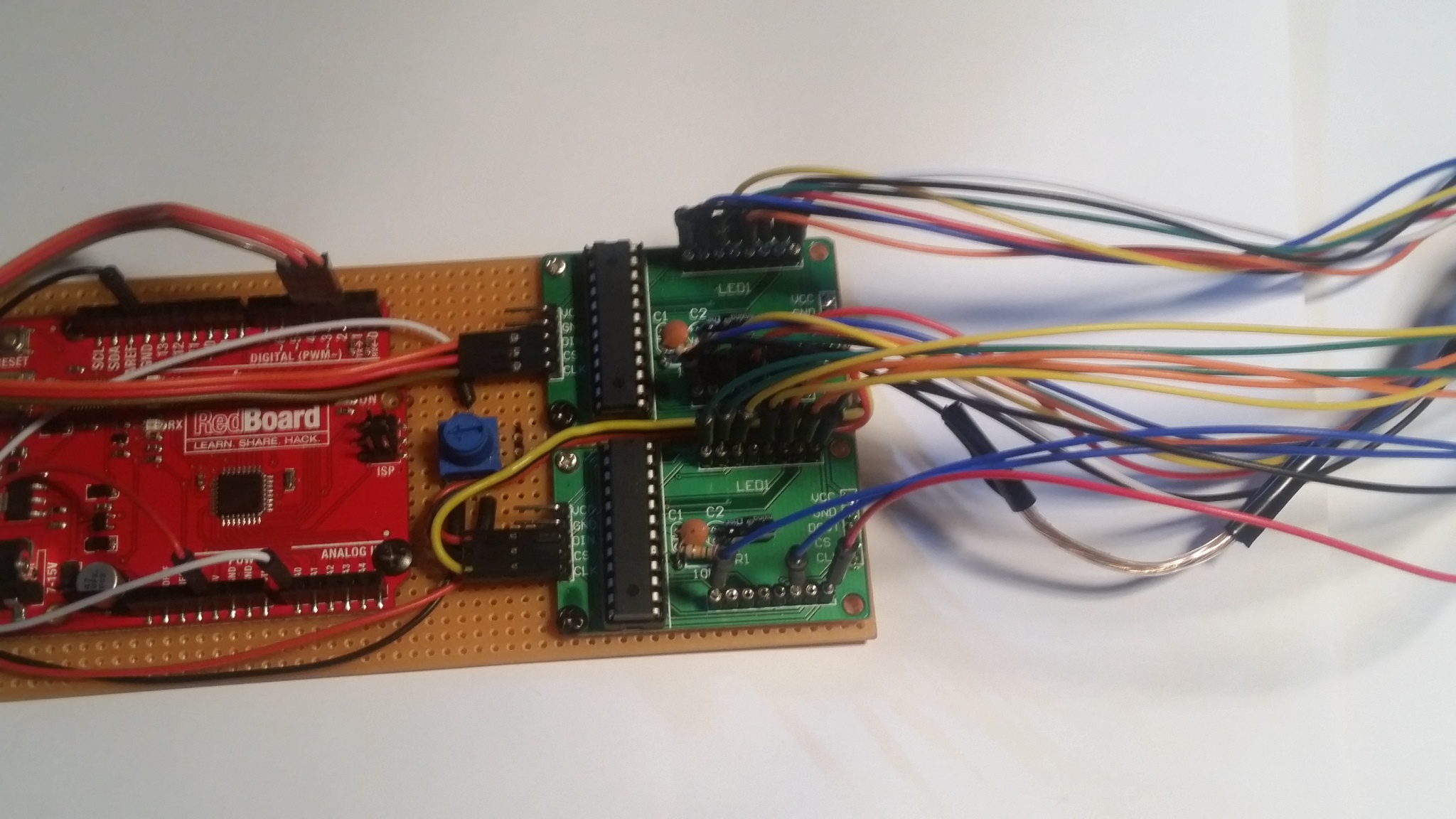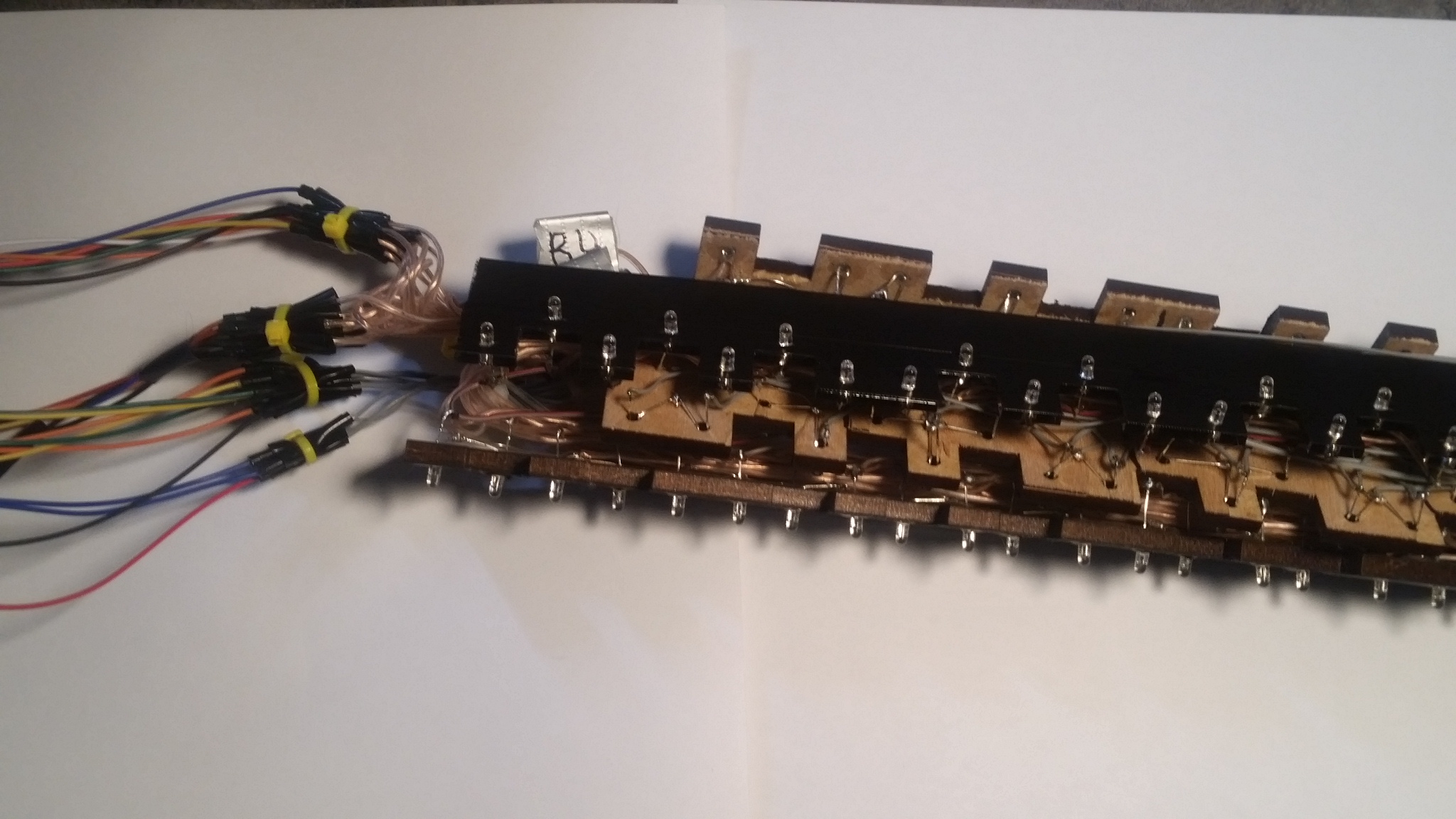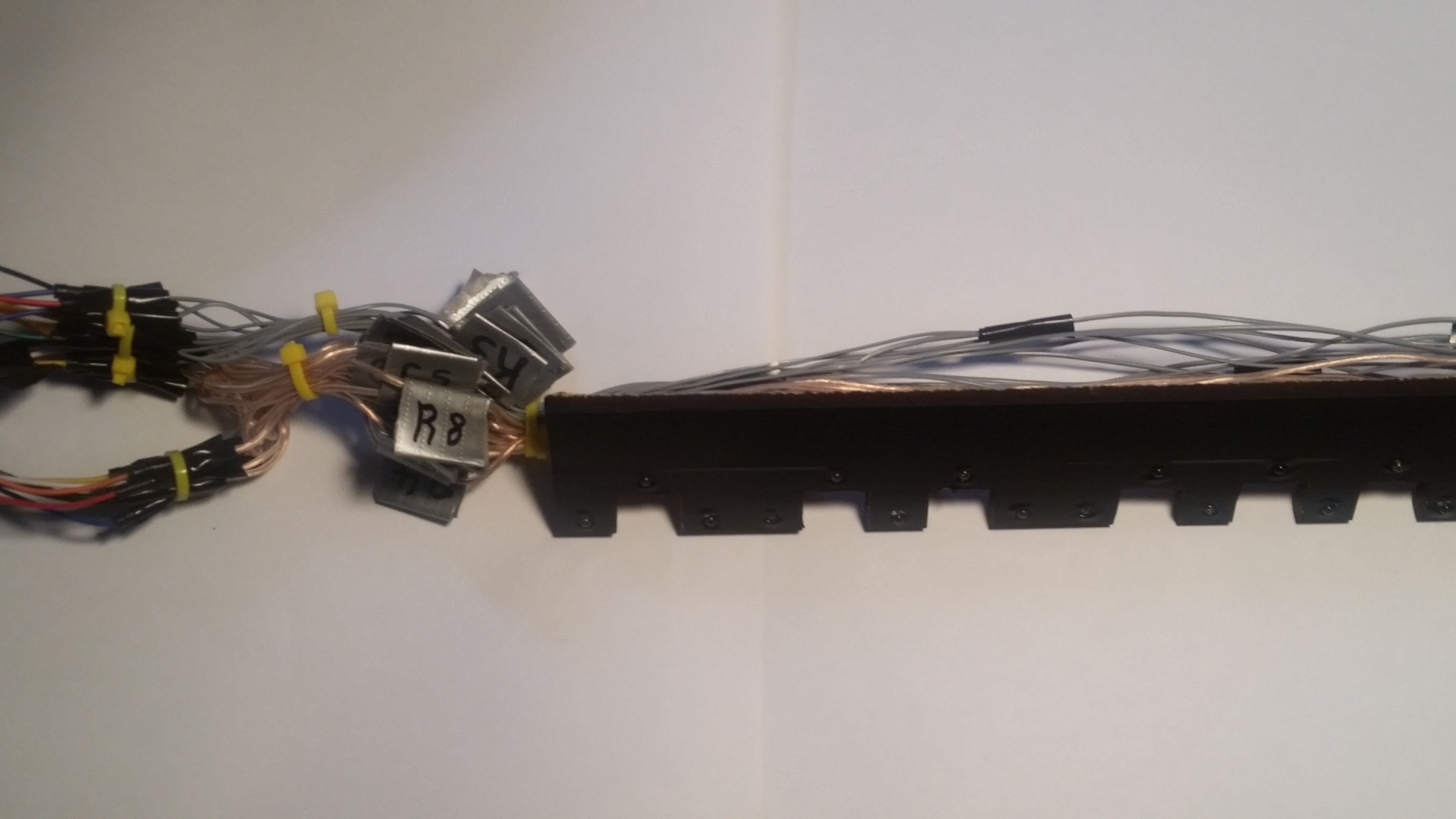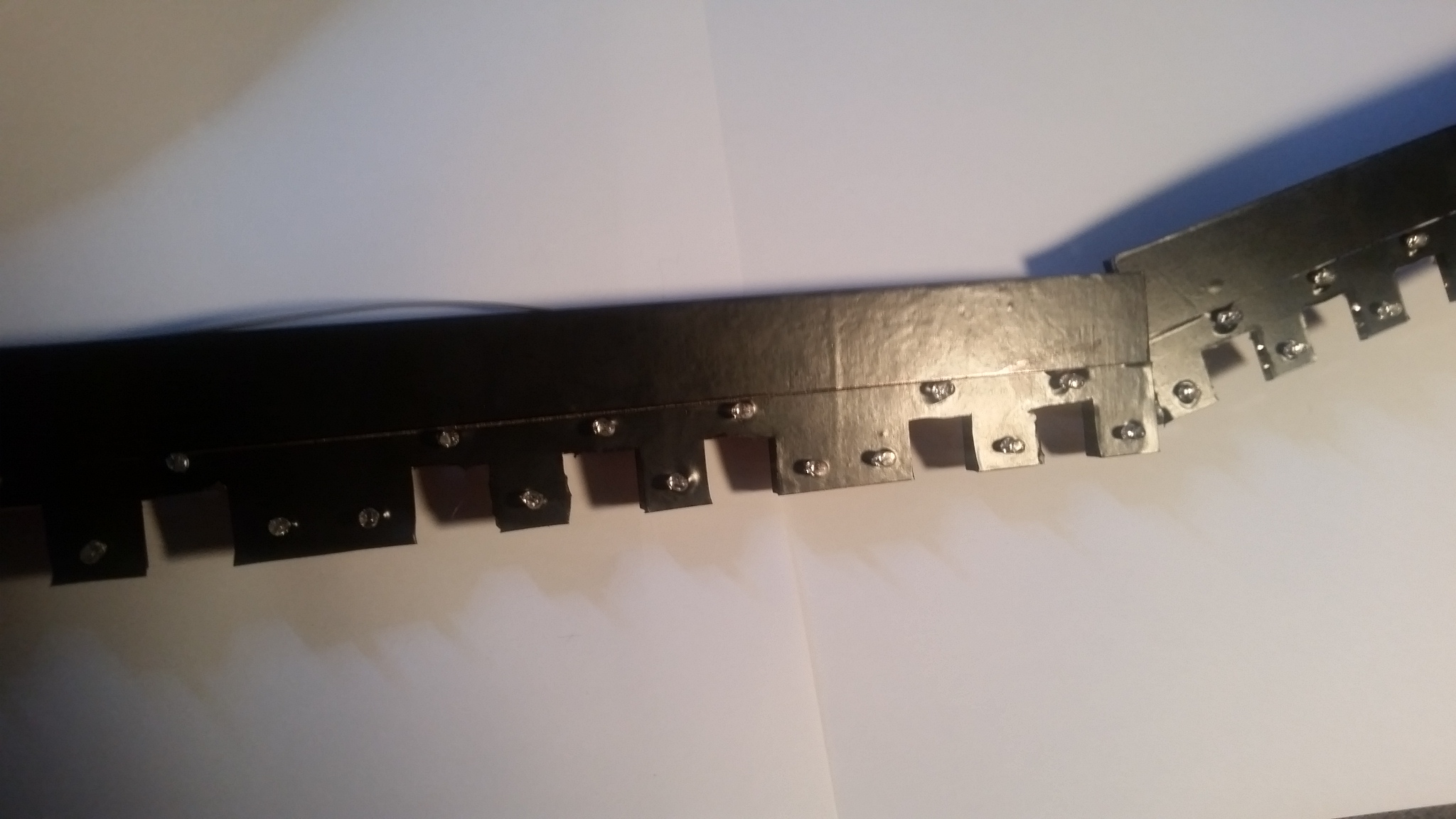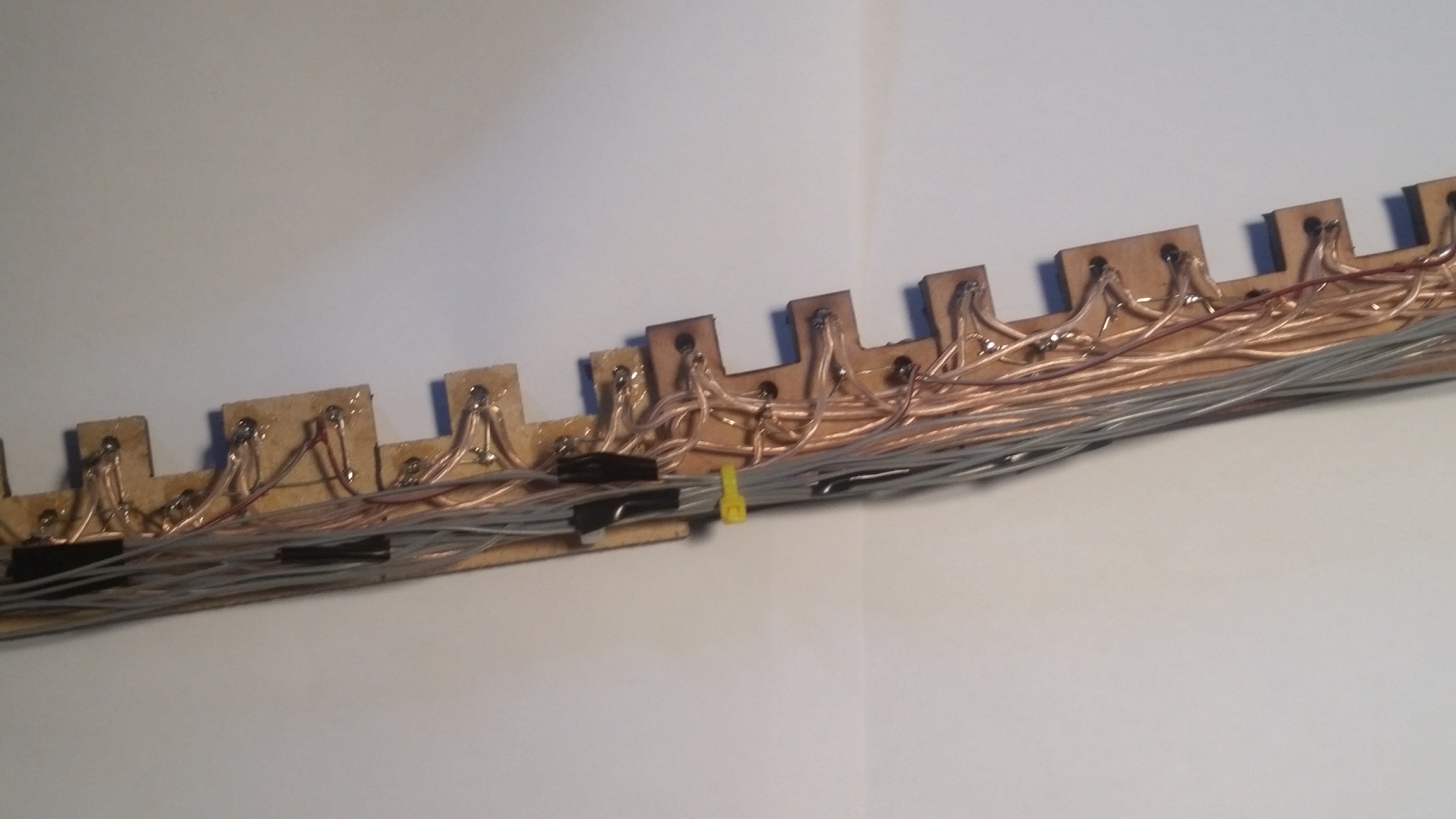Difference between revisions of "LED Strip Piano Guide"
| (21 intermediate revisions by 2 users not shown) | |||
| Line 1: | Line 1: | ||
| − | |||
| − | + | I created an electronic device that can easily be temporarily installed onto a piano. This device uses a microprocessor to individually control 88 LED's. These LED's are arranged above each key of the piano and aid in the process of learning new songs. The intention of this device is not to replace the traditional process of learning how to play the piano, but rather to provide an alternative method of delivering musical information to the player. An example of a case in which this device would be particularly useful would be in use with a player who lacks the ability to sight read quickly, but may have the ability to memorize pieces of music relatively easier. | |
| + | |||
| + | |||
| + | <mediaplayer>http://wiki.wpi.edu/images//images/9/92/PianoVid.mp4</mediaplayer> | ||
| + | |||
The device is made out of an Arduino Uno (clone), two MAX7219 LED drivers, and 88 color-changeable LEDs. The plate that the LED's are mounted onto are laser-cut fiber board colored black and slotted to fit atop all of the keys of any piano at the back of the keyboard. The plate consists of four segments that can fold up into a length of <14 inches and unfold into the length of an entire piano keyboard. | The device is made out of an Arduino Uno (clone), two MAX7219 LED drivers, and 88 color-changeable LEDs. The plate that the LED's are mounted onto are laser-cut fiber board colored black and slotted to fit atop all of the keys of any piano at the back of the keyboard. The plate consists of four segments that can fold up into a length of <14 inches and unfold into the length of an entire piano keyboard. | ||
{|style="margin: 0 auto;" | {|style="margin: 0 auto;" | ||
| − | | [[File:Piano6.jpg| | + | | [[File:Piano6.jpg|300px|thumb|Here's my cheap Arduino Uno clone]] |
| − | | [[File:Piano5.jpg| | + | | [[File:Piano5.jpg|300px|thumb|The two boards on the right are just some pcb's that came with the MAX7219's]] |
| − | | [[File:Piano4.jpg| | + | | [[File:Piano4.jpg|300px|thumb|Here it is folded up]] |
| − | | [[File:Piano2.jpg| | + | |} |
| − | | [[File:Piano1.jpg| | + | {|style="margin: 0 auto;" |
| − | | [[File:Piano3.jpg| | + | | [[File:Piano2.jpg|300px|thumb|Organizing the signal wires was time-consuming]] |
| + | | [[File:Piano1.jpg|300px|thumb|The wires can be completely concealed]] | ||
| + | | [[File:Piano3.jpg|300px|thumb|Nearly 200 feet of wire was used]] | ||
|} | |} | ||
Currently, the code is the limiting factor of this device, and has the most potential to be improved. MIDI files can be translated into use-able code that can be fed into the device, but this is a two part process. In the future, having an actual MIDI interface on the device would be much more ideal, as this would allow the instantaneous delivery of any MIDI song, rather than having to store the song on the device and re-upload different songs. | Currently, the code is the limiting factor of this device, and has the most potential to be improved. MIDI files can be translated into use-able code that can be fed into the device, but this is a two part process. In the future, having an actual MIDI interface on the device would be much more ideal, as this would allow the instantaneous delivery of any MIDI song, rather than having to store the song on the device and re-upload different songs. | ||
| + | |||
| + | [[Category:Interactive Systems]][[Category:Featured]] | ||
Latest revision as of 16:30, 21 April 2016
I created an electronic device that can easily be temporarily installed onto a piano. This device uses a microprocessor to individually control 88 LED's. These LED's are arranged above each key of the piano and aid in the process of learning new songs. The intention of this device is not to replace the traditional process of learning how to play the piano, but rather to provide an alternative method of delivering musical information to the player. An example of a case in which this device would be particularly useful would be in use with a player who lacks the ability to sight read quickly, but may have the ability to memorize pieces of music relatively easier.
The media player is loading...
The device is made out of an Arduino Uno (clone), two MAX7219 LED drivers, and 88 color-changeable LEDs. The plate that the LED's are mounted onto are laser-cut fiber board colored black and slotted to fit atop all of the keys of any piano at the back of the keyboard. The plate consists of four segments that can fold up into a length of <14 inches and unfold into the length of an entire piano keyboard.
Currently, the code is the limiting factor of this device, and has the most potential to be improved. MIDI files can be translated into use-able code that can be fed into the device, but this is a two part process. In the future, having an actual MIDI interface on the device would be much more ideal, as this would allow the instantaneous delivery of any MIDI song, rather than having to store the song on the device and re-upload different songs.
